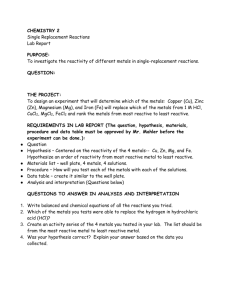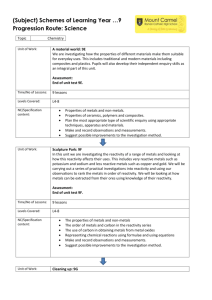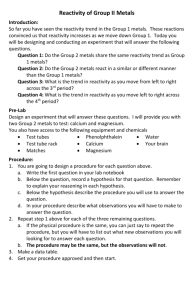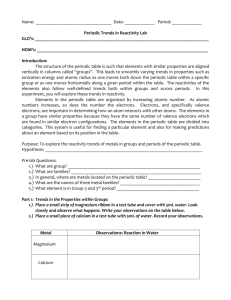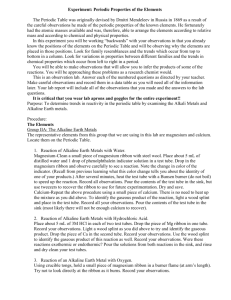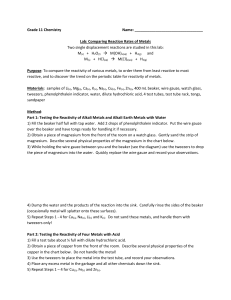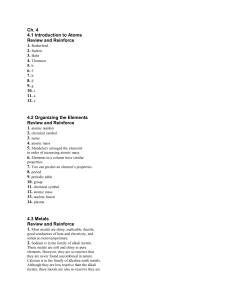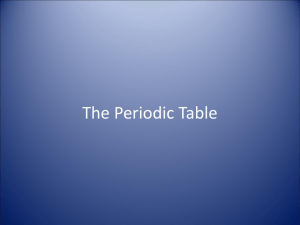Periodic Table Trends - Ms. Hanna`s Science Class
advertisement
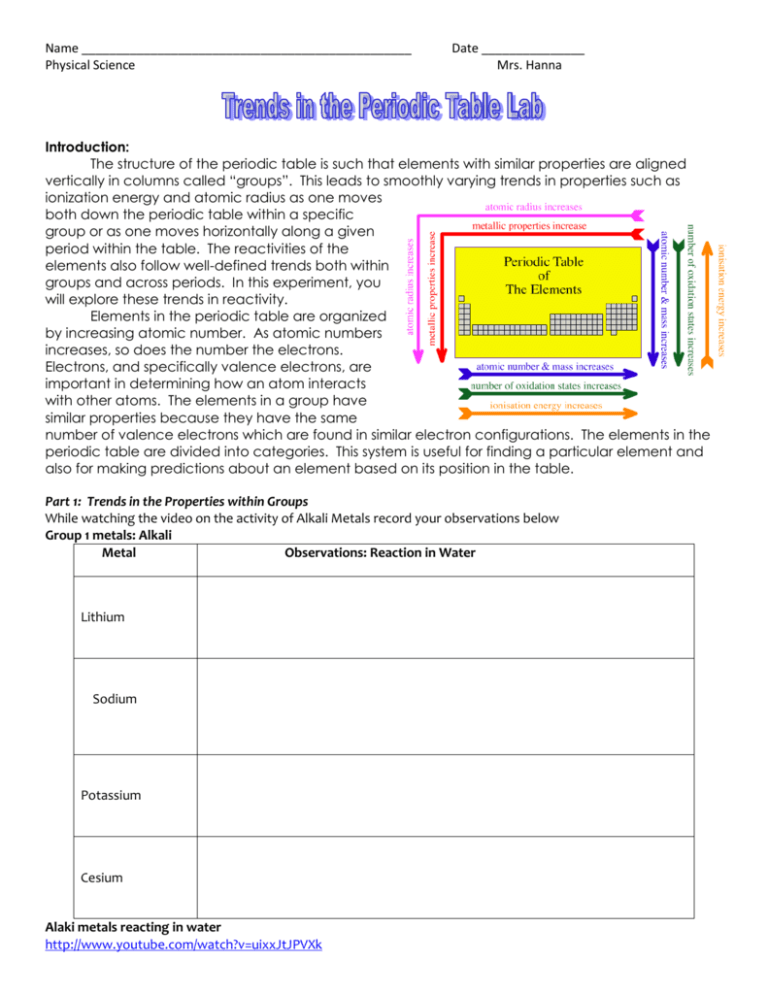
Name ________________________________________________ Physical Science Date _______________ Mrs. Hanna Introduction: The structure of the periodic table is such that elements with similar properties are aligned vertically in columns called “groups”. This leads to smoothly varying trends in properties such as ionization energy and atomic radius as one moves both down the periodic table within a specific group or as one moves horizontally along a given period within the table. The reactivities of the elements also follow well-defined trends both within groups and across periods. In this experiment, you will explore these trends in reactivity. Elements in the periodic table are organized by increasing atomic number. As atomic numbers increases, so does the number the electrons. Electrons, and specifically valence electrons, are important in determining how an atom interacts with other atoms. The elements in a group have similar properties because they have the same number of valence electrons which are found in similar electron configurations. The elements in the periodic table are divided into categories. This system is useful for finding a particular element and also for making predictions about an element based on its position in the table. Part 1: Trends in the Properties within Groups While watching the video on the activity of Alkali Metals record your observations below Group 1 metals: Alkali Metal Observations: Reaction in Water Lithium Sodium Potassium Cesium Alaki metals reacting in water http://www.youtube.com/watch?v=uixxJtJPVXk While watching the video on the activity of Magnesium and Calcium records your observations below. Group 2 metals: Alkaline Earth Metal Observations: Reaction in Water Magnesium Calcium Reactivity of Magnesium and water http://www.youtube.com/watch?v=u_1uLP30uxY Reactivity of Calcium and water http://www.youtube.com/watch?v=i-rFsFwdkTU Questions: 1) Explain why you see a difference in the reactivity of the two alkaline metals, magnesium and calcium, with water. 2) What is the trend going down the first group of Alkali metals? 3) What is the trend going down the first group of Alkaline metals? 4) What is the trend going across from group one to group two? 1. Part 2: Activity Series of Some Metals in HCl Obtain a small piece of each of the metals in the data table below. Place each metal in a small separate test tube. Add a small amount of dilute HCl to the test tube, just enough to cover the sample. https://www.youtube.com/watch?v=l0U7VDSxGHk (results at 2:30) Metal Observations: Reactions with HCl Magnesium Aluminum Copper Zinc Questions: 1) List the 4 metals from your data table from most reactive to least reactive. Use data from your lab to support your answer. Most reactive 1) 2) 3) 4) Least reactive 2) What group number is each of these metals in: Magnesium: _________ Aluminum: _________ Copper: __________ Zinc: __________ 3) What is the trend of reactivity as you go across the table from left to right? Use the data table information above to help you. Questions (use the periodic table) : 1) Do your results support your estimate? Explain. 2) Describe the trend you saw with density. 3) What happens to atomic mass when going down each group of the periodic table? When going across each period? 4) What happens to atomic radius when going down each group? When going across each period?


